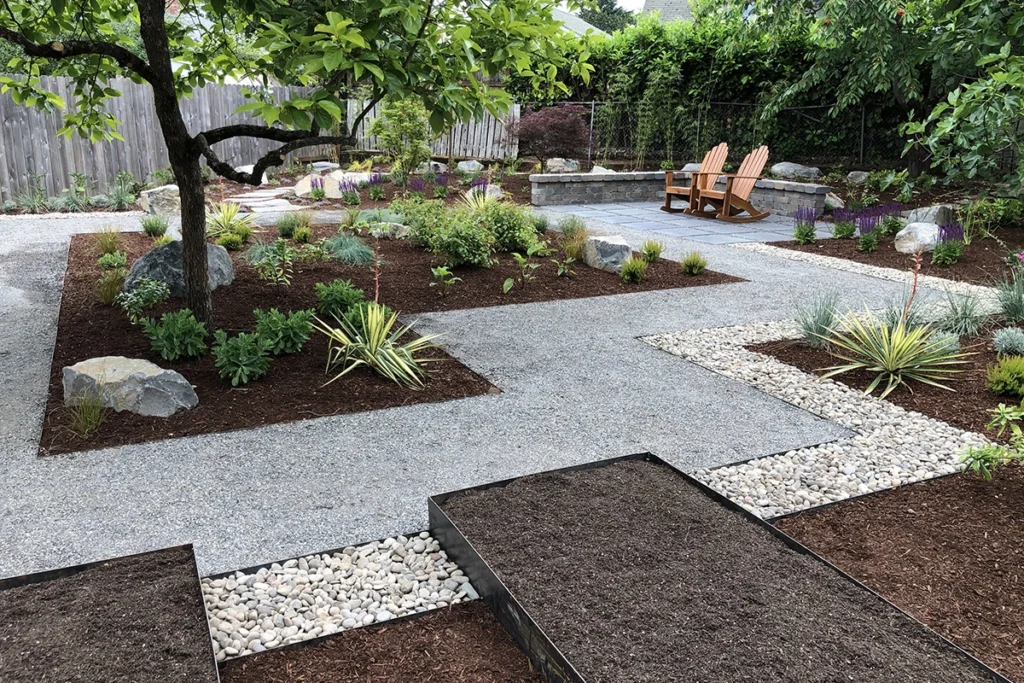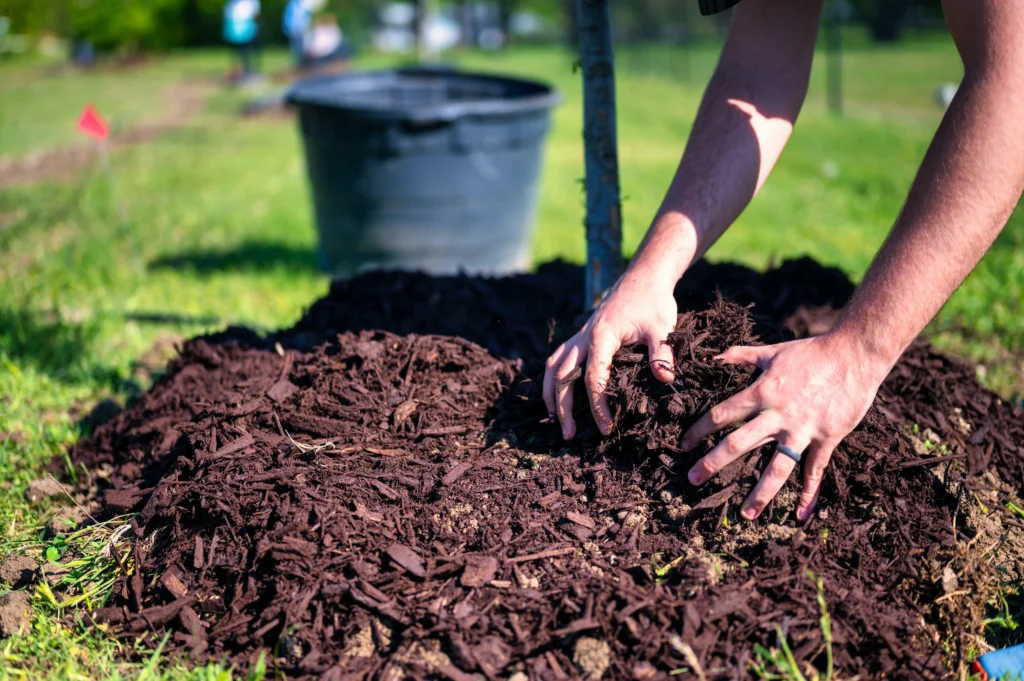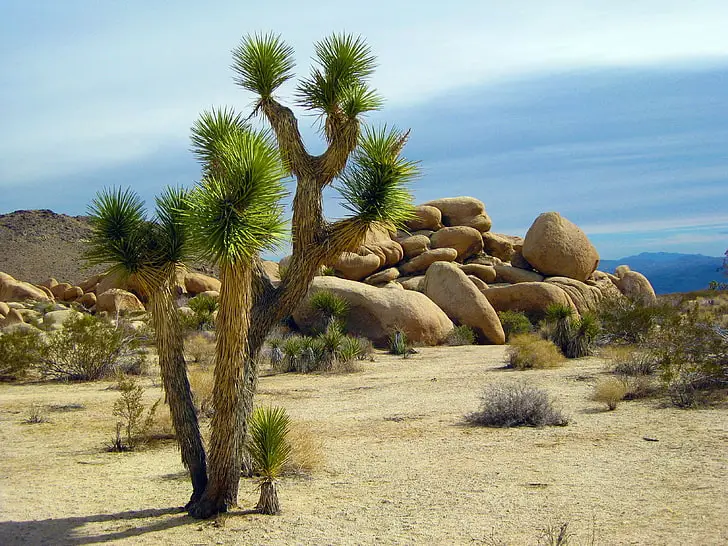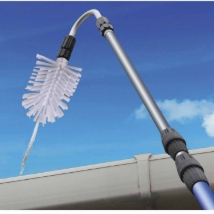Discover the charm of Xexiscape Gardens while reviewing its basic principles. See how to transpose this approach into your yard. Consider this mindful and sustainable approach to landscaping and turn your backyard into a water-efficient paradise.
Xeriscaping is an innovative landscape design that prioritizes water conservation and ecological gardening. It offers a practical solution to the increasing water scarcity in many parts of our world.
In this blog, we will explore xeriscape landscaping principles and techniques for implementing various xeriscaping ideas, covering aspects such as landscape plant selection and garden area design and including ‘zeroscaping’ as a component.
We’ll also learn the advantages of creating backyard landscapes resembling zero-maintenance grass and incorporating effective water conservation techniques.
Understanding Xeriscape Landscaping
Xeriscape landscaping involves planning outdoor spaces that require less water while creating attractive and valuable surroundings.

Xeriscaping is derived from the Greek word ‘xeros,’ meaning dry. It refers to an approach that conserves water by strategically choosing plants, improving soil, and utilizing efficient irrigation systems.
Xeriscape gardens are not just about functionality; they provide a visual delight of colors, textures, and shapes. See how thoughtful design, strategically placing plants, and using natural elements help create beautiful xeriscape gardens.
Key Principles of Xeriscape Landscaping
Water Conservation: The primary purpose of xeriscaping is to save water by using plants that are relevant to the local climate and do not require much irrigation.
Soil Improvement:- Xeriscape Gardens focuses on enhancing soil quality by adding organic matter, like compost to increase water-holding capacity.
Appropriate Plant Selection: Selecting plant species native or suited to the local climate means they do not require much water, so there is little cause for irrigation.
Efficient Irrigation: Xeriscape landscapes commonly include drip irrigation systems, which provide water directly to a plant’s root zone, minimizing evaporation and waste.
Benefits of Xeriscape Landscaping
But more than water conservation, xeriscaping is a concept that comes with numerous benefits. By implementing Xeriscape principles, homeowners can:
Save Water: Xeriscape landscaping can save 50-75% of water, helping homeowners conserve one of our most precious resources.
Reduce Maintenance: With xeriscape gardens, there is little need for mowing and pruning, plus other time-consuming maintenance tasks that homeowners often have to do.
Increase Property Value: Xeriscape landscaping improves a property’s aesthetics and market value. Potential buyers often find the minimal maintenance aspect of xeriscape gardens as comfortable.
Xeriscape Ideas: Creating a Water-Wise Oasis
Thus, integrating xeriscape concepts into your garden will make it a fantastic paradise that can survive in water-saving surroundings.
Let’s look at some great xeriscape ideas you can implement in your landscaping project.
Strategic Grouping of Plants

Plant grouping, where plants with similar water needs are together, makes irrigation more efficient.
By planting certain drought-tolerant species together and organizing areas based on their water requirements, you can achieve optimal results using your irrigation system.
Mulching for Moisture Retention

Establishing a layer of organic mulch around plants helps retain soil moisture because evaporation is lessened.
Mulching also helps to control weeds and enhance soil fertility, making it an integral part of xeriscaping.
Installing Rainwater Harvesting Systems
Rainwater harvesting systems collect rainwater from roofs and store it for irrigation.
By taking advantage of this free resource, homeowners can dramatically decrease their dependency on conventional water sources.

Xeriscaping Plants: Beauty in a Deserted Landscape
The right plants are crucial for a successful Xeriscape garden. These tough and hardy plants will add color and life to your dry landscape.
Lavender (Lavandula)

Lavender has been a favorite addition to xeriscape gardens because of its purple flowers, pleasant aroma, and ability to survive in dry conditions. It attracts pollinators and provides elegance to any garden.
Yucca (Yucca spp.)

Yuccas are distinctive xeriscaping plants with strong architectural lines that tolerate severe environmental conditions. These low-maintenance plants make a good focal point in the garden and require very little water.
Agave (Agave spp.)

Agaves are succulent plants in many shapes, sizes, and colours.
They are well adapted for arid habitats because they can hold water in their leaves. Agaves provide drama and texture to dry gardens.
Xeriscape Grass: Alternatives to Conventional Lawns
Xeriscape grass is an enticing alternative to traditional lawns, which are water-intensive. Here are some great options for non-traditional grass.
Buffalo Grass (Bouteloua dactyloides)

Buffalo grass is a native warm-season species that does not require much water or care.
Its dense turf-like growth pattern and tolerance to heat make it the best choice for xeriscape lawns. It is a worm-like, fine-textured native grass that grows well in dry areas.
As it turns golden brown during drought periods, it looks pretty on xeriscape lawns and offers ground cover.
Clover (Trifolium)

Clover is a great substitute for ordinary lawns as it requires little water, does not require much attention, and can save nitrogen in the soil. In addition, it attracts pollinators, making this plant a good environmental addition to any xeriscape garden.
Incorporate Hardscaping Elements
Hardscaping elements such as decorative rocks, gravel pathways, or stone walls can reduce water usage. These features are visually appealing, do not require irrigation, and help implement a sustainable xeriscape garden design.
Create Diverse Planting Zones

Use different planting zones according to the amount of water needed and the required sun exposure for these plants.
With these measures, the plants can grow to their fullest with minimal water usage in your xeriscape garden.
Xeriscape Backyards: Transforming Outdoor Spaces
Xeriscape principles can be implemented neatly in a backyard to create a sustainable outdoor oasis. So, let’s consider how to turn your backyard into a xeriscape wonderland.
Outdoor Living Areas

Design your xeriscape backyard with comfortable seating areas, lounging spaces or dining zones. These outdoor living spaces allow you to appreciate your xeriscape garden significantly without wasting too much water.
Vertical Gardening

Develop vertical gardens with climbing plants, trellises, or living walls. These green vertical spaces provide an interesting appearance but also help enhance your garden’s beauty without increasing water demands.
Sustainable Water Features

If you want a water element in your xeriscape yard, look for alternatives to regular fountains or ponds. Consider low-flow water features or environmentally friendly options, such as a recirculating waterfall that significantly reduces water consumption.
Zeroscaping: The Art of Desert Landscaping

Zeroscaping, or zero-scape landscaping, is a specialized form of xeriscaping that creates aesthetically appealing and practical landscape designs in areas characterized by arid conditions.
Rock Gardens

Zeroscape landscaping is also associated with rock gardens, highlighting the natural beauty of rocks and boulders.
An attractive yet dry landscape can be created with rocks surrounded by water-conserving plants.
Succulent Showcase

Zeroscape gardens need to have succulents that, unlike other plants, not only look unique but also have the capability of storing water. These tough plants grow well in dry conditions, providing an interesting touch to the landscape.
In zeroscape landscaping, deadwood is honored as a design component.
It creatively incorporates fallen trees, tree stumps, and dried branches to create a landscape that adds rusticity with minimal water use.
Conclusion
Xeriscaping is a sensible and environmentally friendly method of designing attractive landscapes without wasting water.
Following xeriscape landscaping principles, incorporating innovative ideas, and selecting suitable plants can enhance a yard’s setting.
Considerations like zero-scaping for backyards or converting front lawns into all-natural sceneries with no-mow grass provide interesting solutions.
Homeowners can adopt xeriscaping principles, turning their gardens into water-efficient, lush havens in just one day.
Xeriscaping is not a fad but an environmentally responsible and sustainable approach to landscaping.
When we practice xeriscape principles, we can create an attractive landscape that conserves water for the benefit of future generations









